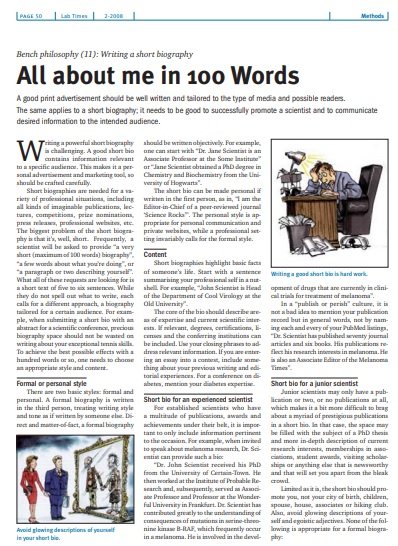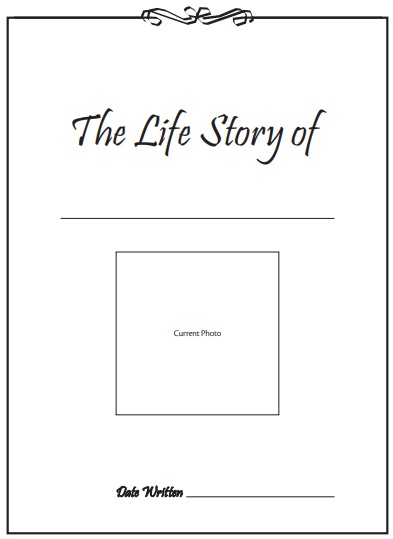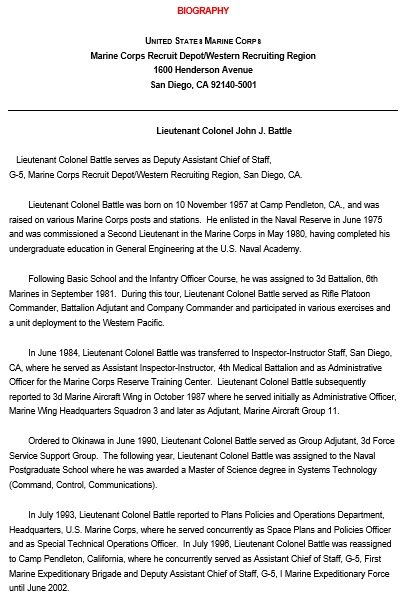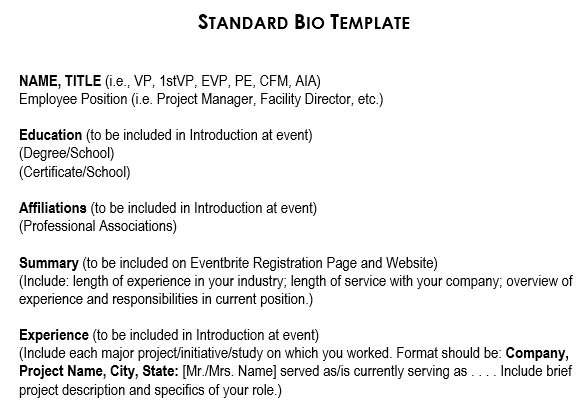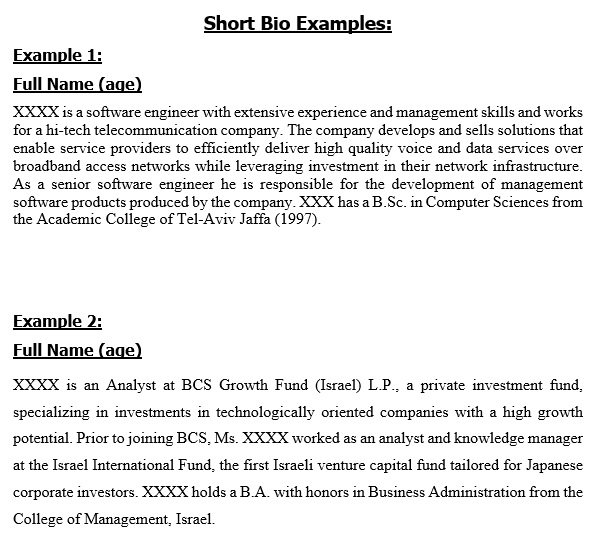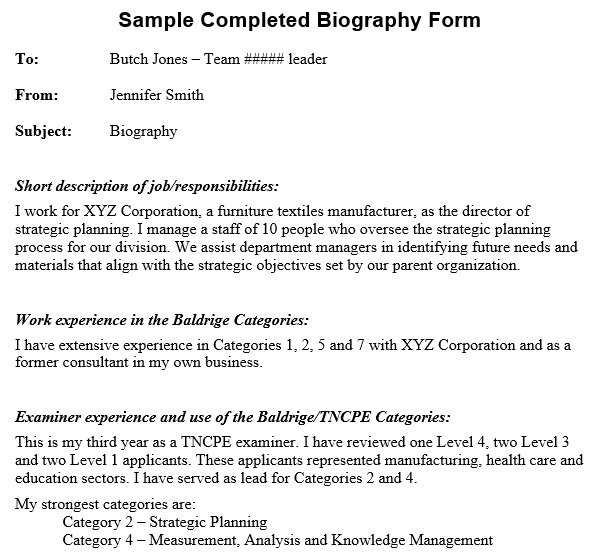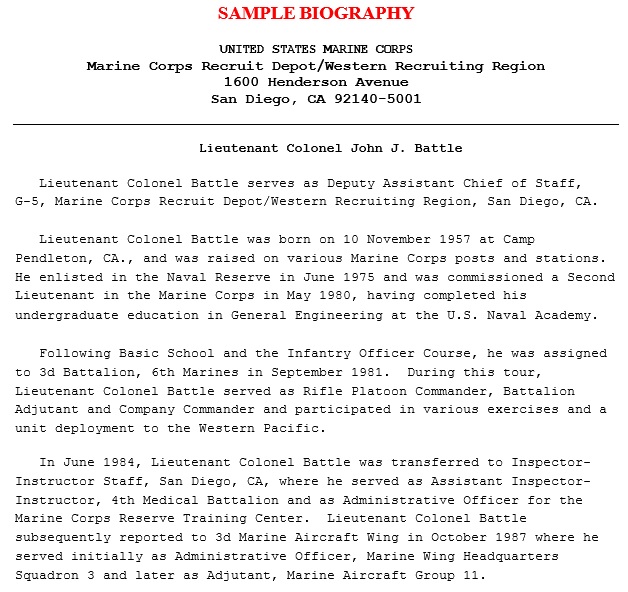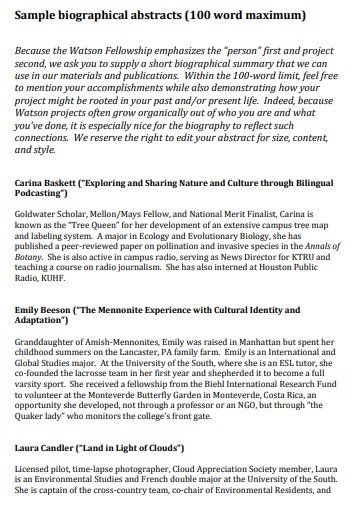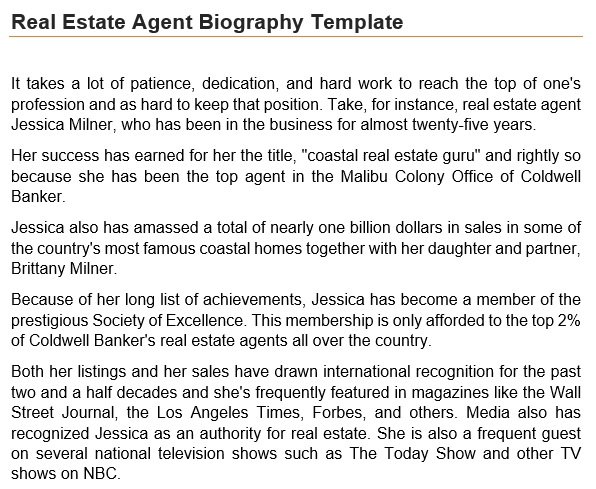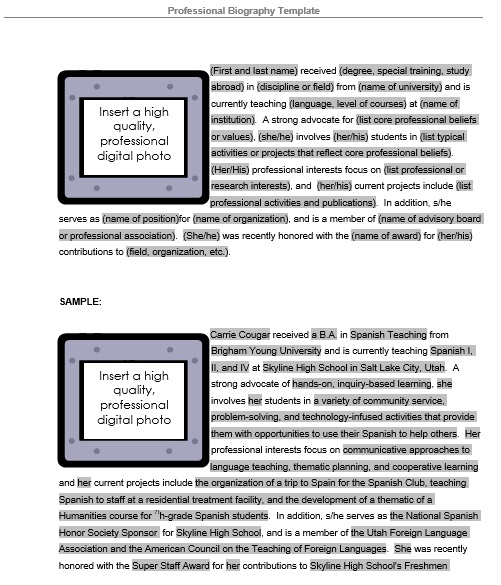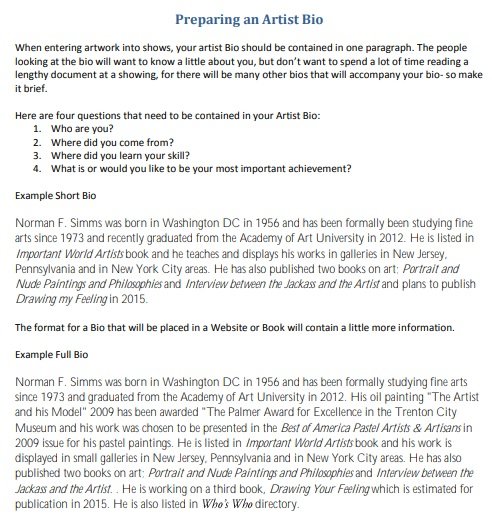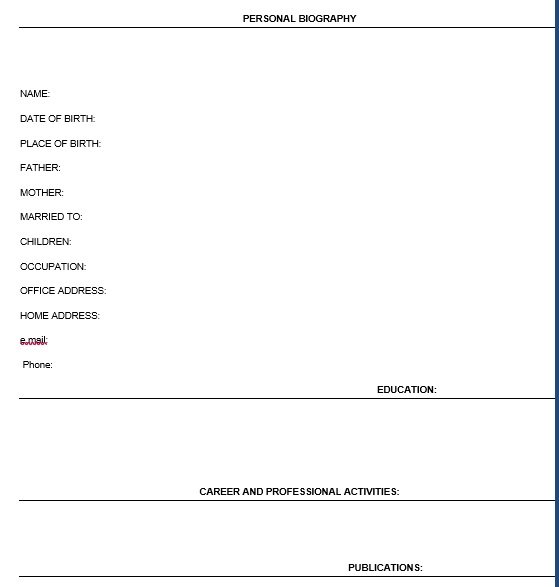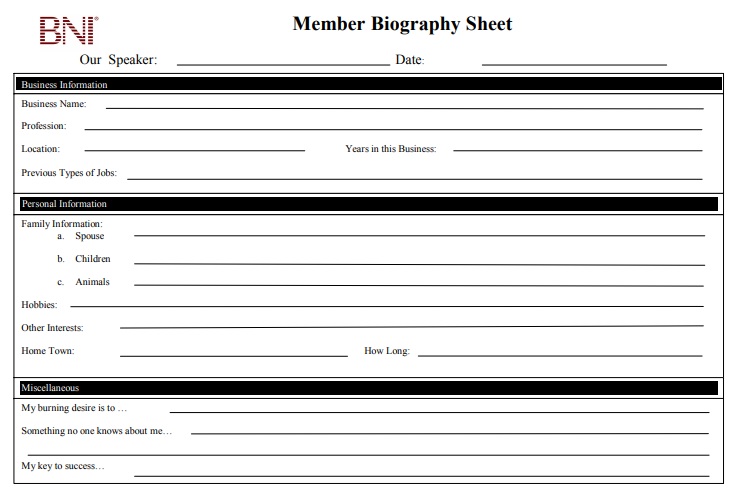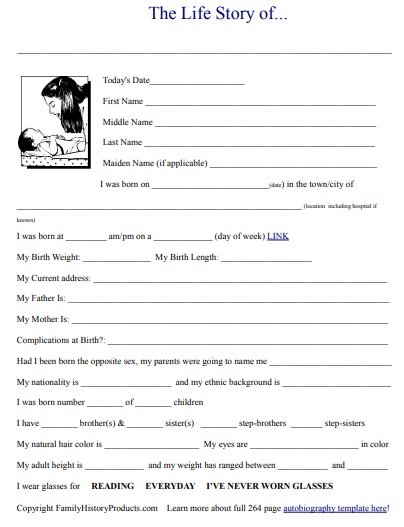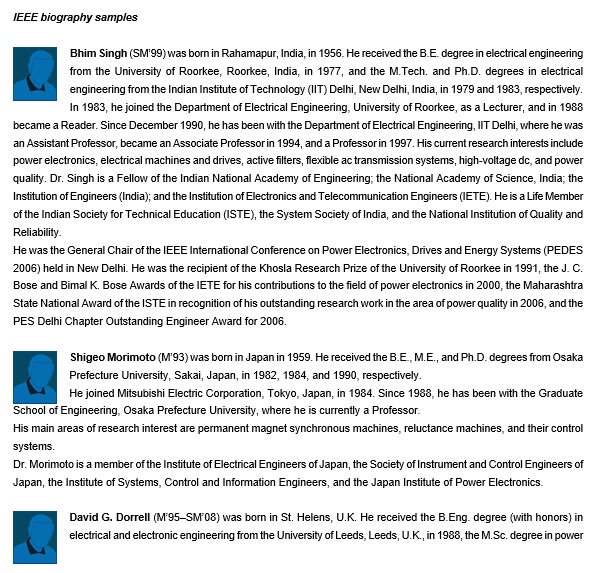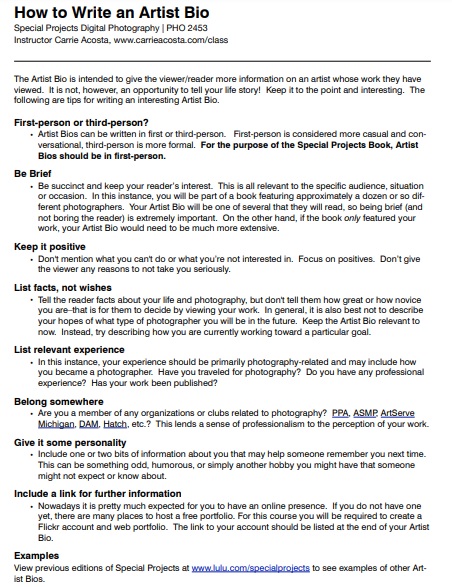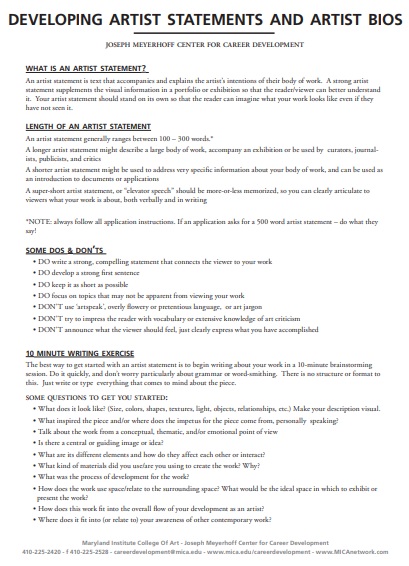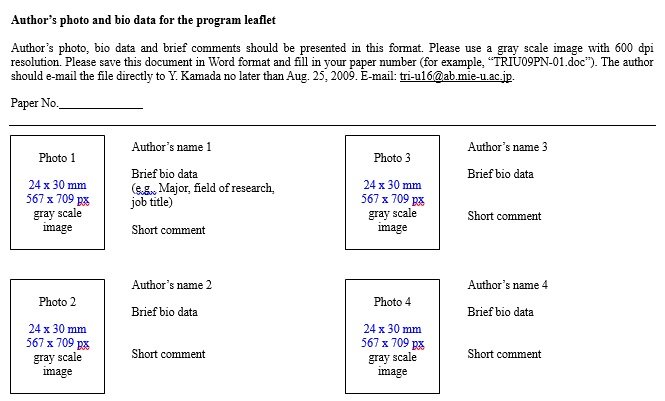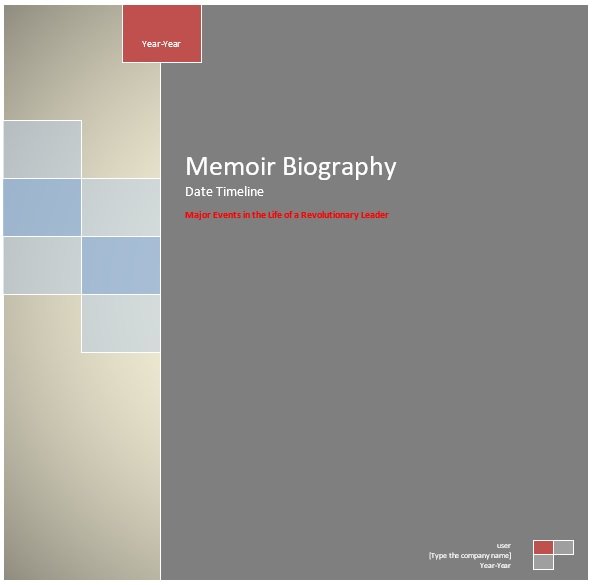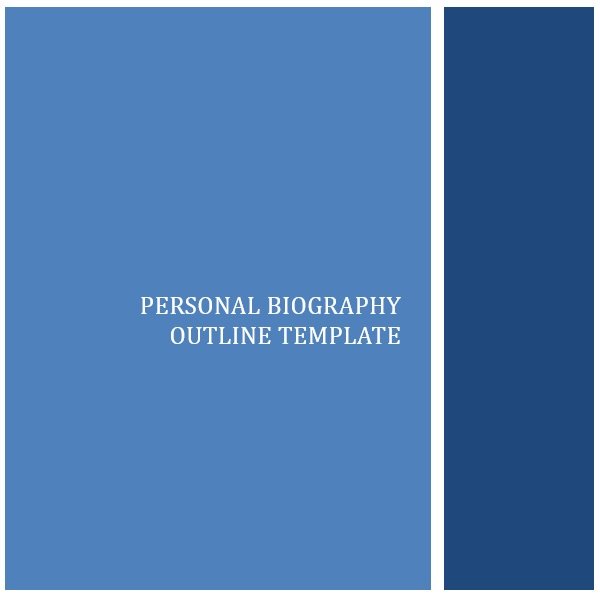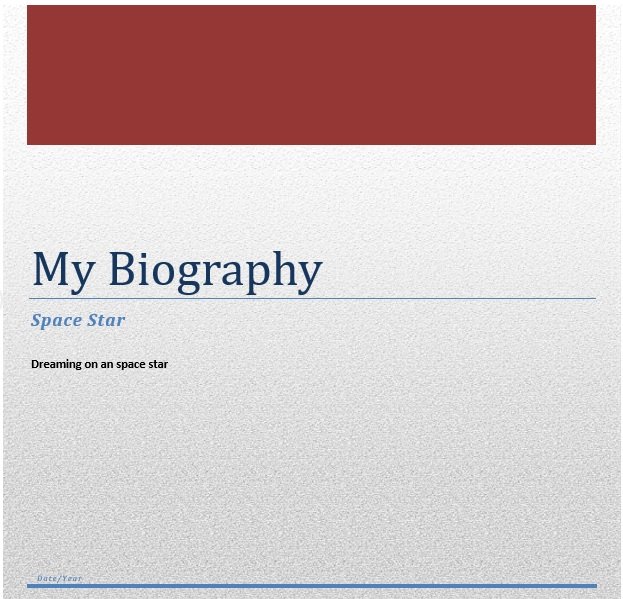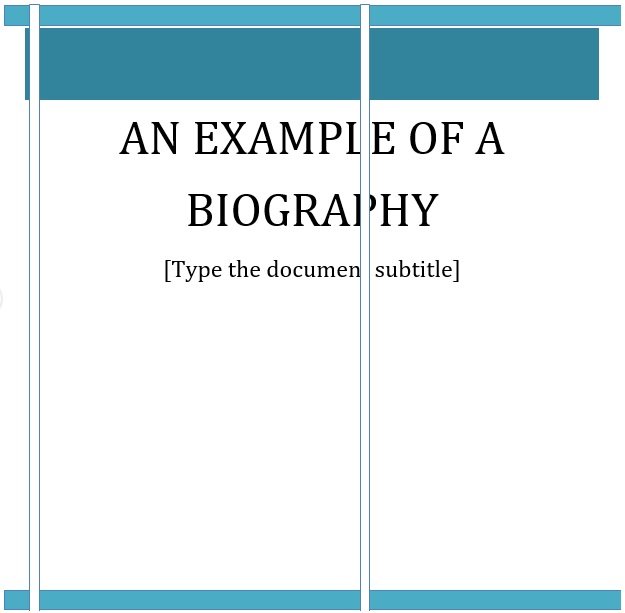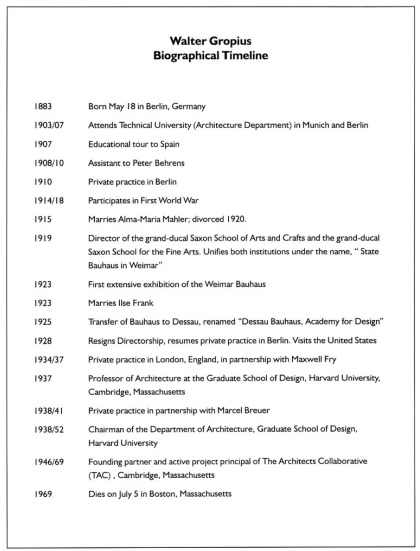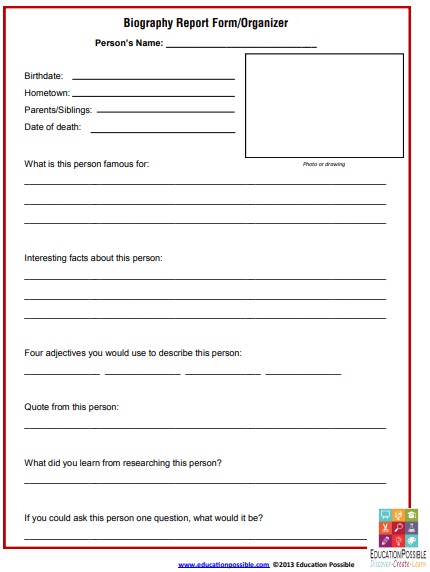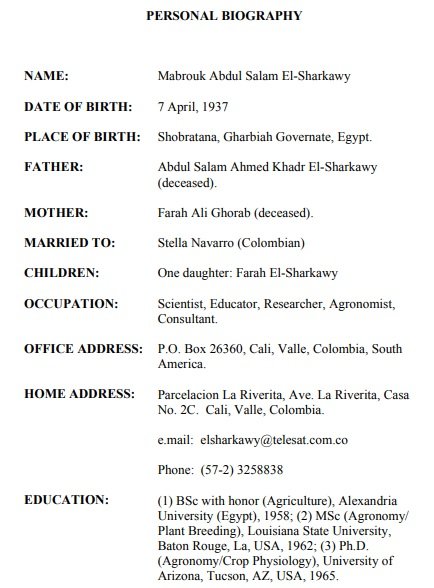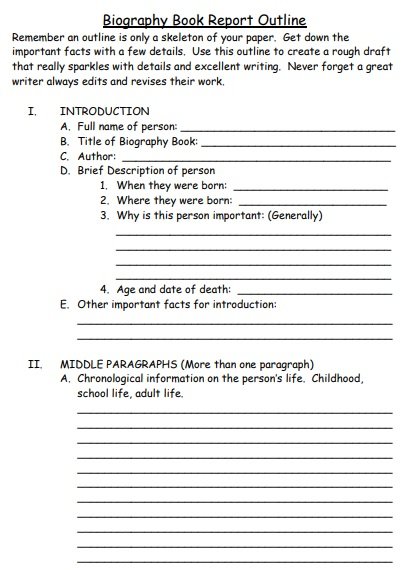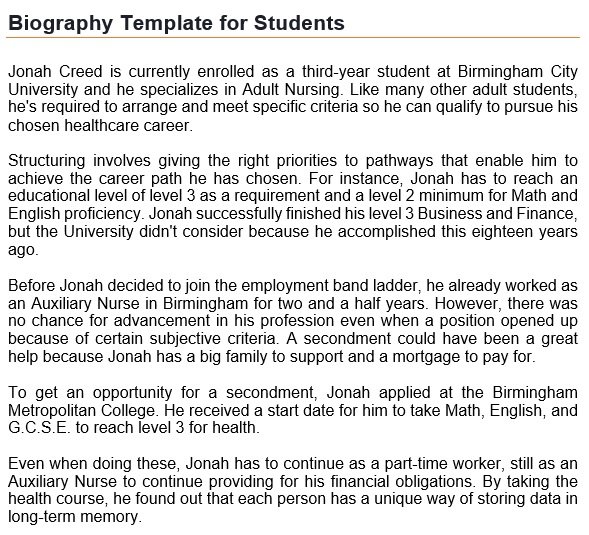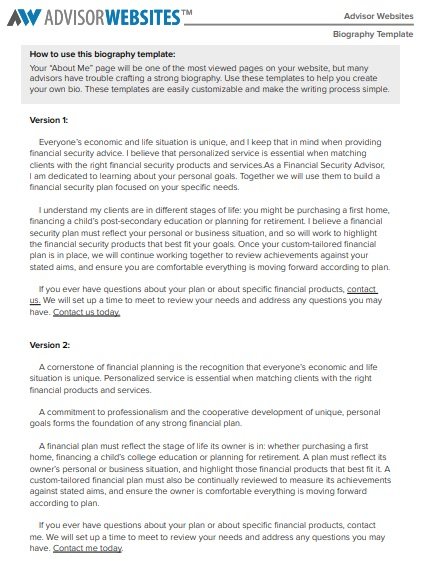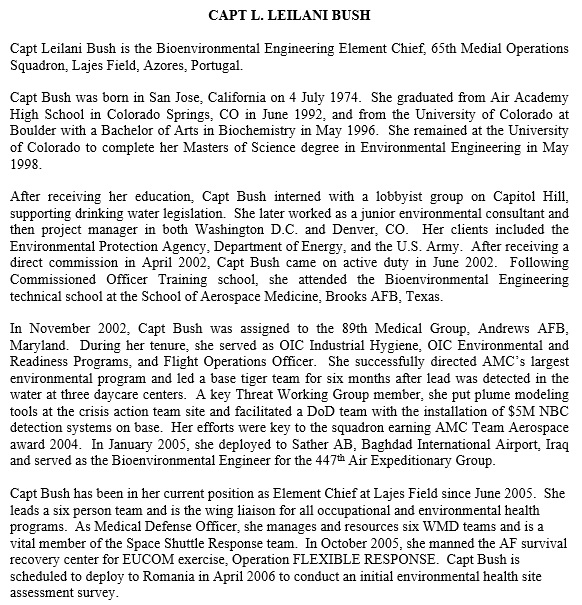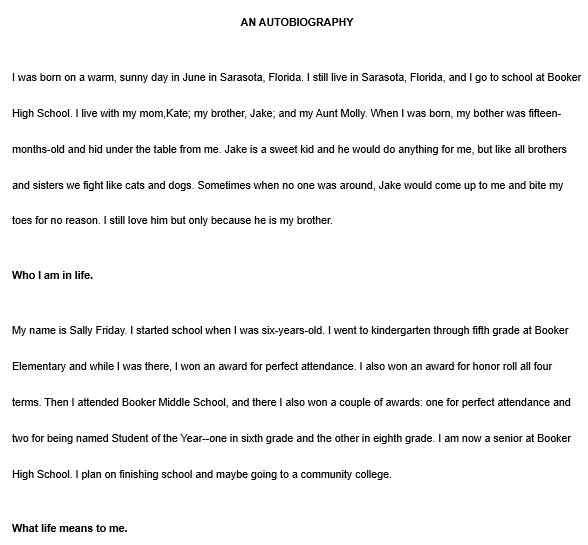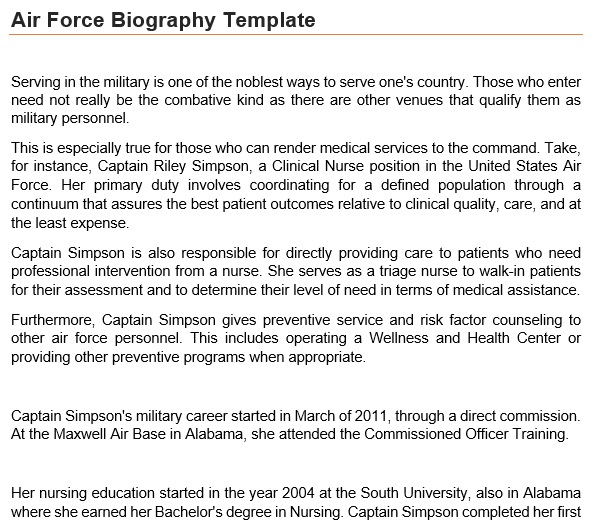A biography template contains an account of individual’s life written by another person. A few sentences biography can be short and it can be as long enough to fill an entire book. A short biography just contains a person’s basic life facts and their importance. On the other hand, the long biography includes more details to make it an interesting read.
Table of Contents
What to include in a biography?
The length of the biography is totally based on the type of information you would include. The length identifies the nature of information and how widely it demonstrates the life of a person. For a short biography, the following details should be included;
- An individual’s date and place of birth or date and place of death.
- The person’s major accomplishments in life.
- Educational background.
- Work facts of a person and his contribution to that particular field.
- Briefly state the significance of an individual in the community.
A lengthy biography is a bit more complex that contains more details of a person’s life. However, you can also ask the target audience about the nature of the information to be included. They inform how the information is displayed and the essential details that they could be interested in. If the audience is unknown then you have to include more details. Usually, several paged biography contains more details. In this case, you should focus on the uniqueness of an individual. This can do wonders and can turn out to be inspirational to many people. You should also provide a description of the field that the person has majored in or had majored. In this way, you can bring out the contribution of the individual to their field of study.
How to write an effective biography?
A good biographer always demonstrates specific actions and events that a certain figure was involved in. This allows you to clearly bring out the importance of a person’s life through his achievements or remarkable deeds. Biographies commonly include details about a person’s life in a chronological order. Some biographies also write in themed order like early life, educational background, and a person’s achievements. But short biographies usually focus on one area in a person’s life.
You can also take help from several sources in writing an astounding biography. These sources can be categorized into two;
The primary sources:
The primary sources involve materials like letters, newspaper accounts or diaries. You can also arrange an interview with a person you want to write about. An interview is also a primary source of information.
The secondary sources:
The secondary sources include books, other biographies or historical records. All these sources are related to the subject being written about.
Let us discuss below how to write an effective biography;
- At first, choose the person you want to write about.
- Then, find out the basic facts that relate to a person’s life.
- Now, take some time to think about the details to add in the biography. In a person’s life, select the area that you want the biography to revolve around. Some points that may help you are the following;
1- The most interesting thing about an individual
2- The importance of the person to society and the world
3- The best qualities or adjectives for the description of an individual
4- Actions or events that bring out qualities or adjectives selected above
5- Events that shaped the individual or brought out the best in him
6- The obstacles that the individual faced and how he handled them
7- Individual’s impact in the world - By researching on the internet, add some additional information to the above points. You should search for information that tells a story in an effective way.
- When you have gathered all the information now, you can write the biography.
A professional biography:
A professional biography is usually written about a person, business or company. It is a statement that could either be short or long. The professional biography should be engaging, informative and interesting for the readers. It should include the following elements;
- A summary of someone’s early life
- Educational information, academic rewards, work experience
- Innovative and creative qualities to deal with the problems
- State all qualities like being independent, principled or discerning to enhance someone’s trustworthiness.
Below are the tips that will help you in writing the best professional biography;
- You have to be brief and precise to the point. In this way, the reader will easily get to know about you.
- Be spontaneous and expressive in your writing. During drafting the professional biography, avoid too much of self-editing.
- Write it in third person and but friendly bout not too informal.
A personal biography:
A personal biography indicates who you are, your credentials and your notable achievements in life. Such type of biography is usually short, precise and relevant. Avoid using of personal statistics such as hobbies or family. The key components of personal biography are;
- At first, provide an introduction of yourself. Keep in mind that you have to write it in third person. Include the year that when your professional career began.
- Mention your educational facts and the degrees that you have pursued and the respective institutions. Also, include any relevant experiences you have.
- Any achievements or awards that you have earned outline them. Add the information that is relevant to the audience being addressed.
- In the conclusion, indicate any upcoming projects or works in progress.
Difference between first-person bio and third-person bio:
You can write the professional bio in the first or third person. However, it depends on the impression that you want to leave. Both formats are effective if you tailor them according to your goals and the audience you are writing for. You just have to tell your story in a way that connects with your reader.
Writing a first-person bio:
Writing in the first-person can be an effective way to connect with your audience if you are building a personal brand. Make use of ‘I’ or ‘me’ statements while writing a first-person bio. This way, you make yourself relatable and approachable.
Moreover, you are stating your story directly to your audience while writing in a first-person. This indicates that you are created your bio with your personal experience and opinions. Here are a few tips that you should consider while making your first-person bio;
- Don’t start every sentence with ‘I’ as showing is a great approach rather than telling.
- In order to make a context for the roles and successes you are writing about, you should include some back story to your bio.
- You should include that can indicate someone new who you are and what you stand for.
Writing a third-person bio:
Your bio becomes more authoritative and objective by using the third-person. You should stick to the third person in case you are searching job in a formal industry or trying to get published. The sound of your third-person bio should friendly and polished. Consider a few more tips on how to write a great third-person bio;
- It isn’t easy to write about yourself. So, you should write from the perspective of someone you know and trust. This way, you can write from a position of the authority having no feeling of self-conscious.
- Professional bio usually indicates a specific industry so you should add relevant information that people in the industry would know.
Conclusion:
In conclusion, a biography template is written in order to analyze a person’s life. It is also important to update your biography to reflect who you are at the present time. You can also use biography templates to make your own biography without missing out on the important details.
Faqs (Frequently Asked Questions)
Usually, a biography is written in a chronological order. Some may also compose it in a themed order such as early life, educational background, or a person’s achievements.
The key features of a biography are;
1- Written in formal language
2- Consists of compound and complex sentences
3- Written in a chronological order and in the past tense
They are basically 5 types of biography;
1- Scholarly chronicles
2- Intellectual biography
3- Life history writing
4- Memoir biography
5- Narrative biography

